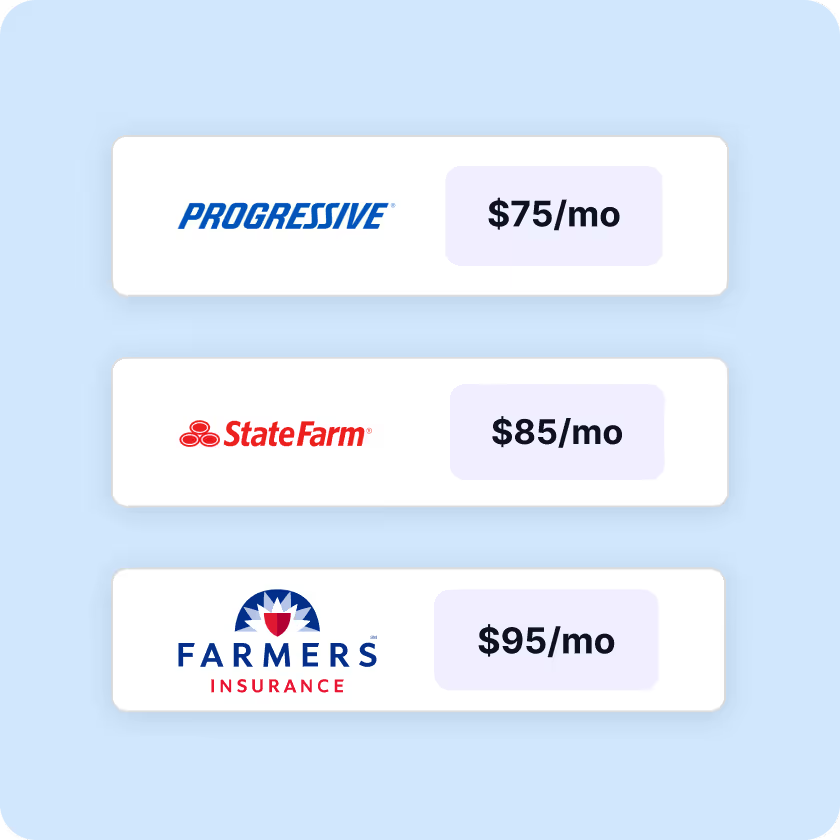
Kudos has partnered with CardRatings and Red Ventures for our coverage of credit card products. Kudos, CardRatings, and Red Ventures may receive a commission from card issuers. Kudos may receive commission from card issuers. Some of the card offers that appear on Kudos are from advertisers and may impact how and where card products appear on the site. Kudos tries to include as many card companies and offers as we are aware of, including offers from issuers that don't pay us, but we may not cover all card companies or all available card offers. You don't have to use our links, but we're grateful when you do!
Chase Sapphire Reserve vs Bank of America Travel Rewards: Which Is Better In 2025?
July 1, 2025


Editor's Picks
- Chase Sapphire Reserve®: This premium card is ideal for frequent travelers looking to maximize rewards on dining and travel while enjoying luxury perks.
- Bank of America® Travel Rewards Credit Card: This card is a great choice for beginners and casual travelers seeking a simple, no-annual-fee way to earn flat-rate rewards on all purchases.
Chase Sapphire Reserve® Breakdown
[[ SINGLE_CARD * {"id": "510", "isExpanded": "false", "bestForCategoryId": "15", "bestForText": "Frequent Travelers", "headerHint": "$300 Annual Travel Credit"} ]]
Why We Like It
Here’s a quick look at why the Chase Sapphire Reserve® stands out as a top-tier travel card.
- Its premium travel perks, like the annual $300 travel credit and Priority Pass™ Select lounge access, provide immediate, tangible value.
- You can maximize your rewards by transferring points 1:1 to a variety of high-value airline and hotel partners.
- The $795 annual fee is significantly offset by the $300 travel credit, bringing your effective annual cost down to $495 (publisher-formulated estimate).
Pros
- Offers a suite of premium travel benefits, including an annual travel credit and airport lounge access.
- Provides excellent rewards flexibility with the ability to transfer points to various airline and hotel partners.
- Includes robust travel insurance and purchase protections, offering peace of mind for frequent travelers.
Cons
- Carries a significant annual fee, which may not be justifiable for infrequent travelers.
- Approval typically requires an excellent credit score, which can be a barrier for some applicants.
- The rewards structure can be complex, and some of the card’s benefits require enrollment to activate.
Bank of America® Travel Rewards Breakdown
[[ SINGLE_CARD * {"id": "190", "isExpanded": "false", "bestForCategoryId": "15", "bestForText": "Occasional Travelers", "headerHint": "Decent Choice"} ]]
Why We Like It
Here’s a quick look at what makes the Bank of America® Travel Rewards card a solid choice.
- This card is a budget-friendly travel companion as it has no annual fee and no foreign transaction fees.
- You'll earn a simple, flat rate of 1.5 points per dollar on every purchase, with no categories to track.
- Since the card has no annual fee, you begin to accumulate net value from your very first swipe (publisher-formulated estimate).
Pros
- Its rewards program is simple to use, offering a flat earning rate on everything you buy without needing to track spending categories.
- Points can be redeemed as statement credits for a wide variety of travel and dining expenses, giving you the freedom to book how you want.
- Existing Bank of America customers may qualify for a rewards bonus on all purchases, which can significantly increase the points you earn, as highlighted in a comprehensive review.
Cons
- The card's rewards program is straightforward but lacks bonus categories, so you won't earn extra points on travel or dining purchases.
- It doesn't offer premium travel perks such as airport lounge access or the ability to transfer points to airline and hotel loyalty programs.
- To unlock the card's highest earning potential, you need to be a Bank of America Preferred Rewards member, which requires a substantial financial relationship with the bank.
Bank of America® Travel Rewards vs Chase Sapphire Reserve®
Categories
When deciding which is better, Chase Sapphire Reserve® or Bank of America® Travel Rewards, it's important to consider your travel frequency. Each card is designed for a different type of traveler, making one a clear winner depending on your habits.
- Chase Sapphire Reserve® This card is Chase's flagship premium travel rewards card, making it best suited for frequent travelers who can take full advantage of its many travel-related benefits.
- Bank of America® Travel Rewards Credit Card This card is an excellent choice for occasional travelers or those new to travel rewards. Its simplicity makes it a great starter card for casual travelers.
Redemption
- Chase Sapphire Reserve®: This card offers flexible redemption options, allowing you to transfer points to airline and hotel partners or book travel through the Chase Ultimate Rewards® portal for increased value.
- Bank of America® Travel Rewards Credit Card: Redemption is straightforward with this card, as you can apply your points as a statement credit to cover any travel or dining purchases.
Travel Perks
- Chase Sapphire Reserve®: As a premium card, it offers a comprehensive travel ecosystem.
- Cardholders get access to the feature-rich Chase Ultimate Rewards® portal for booking travel.
- It includes a complimentary Priority Pass™ Select membership, which provides access to a global network of airport lounges.
- There are no foreign transaction fees for purchases made abroad.
- The card also comes with an annual travel credit and a suite of travel insurance protections, though an annual fee is required.
- Bank of America® Travel Rewards Credit Card: This card provides a more basic but valuable ecosystem for less frequent travelers.
- Travel can be booked through the Bank of America Travel Center.
- It does not offer complimentary airport lounge access.
- A key perk is the absence of foreign transaction fees, which is notable for a card in its class.
- Its ecosystem is simpler, reflecting the fact that the card typically has no annual fee.
Compare Top Rated Credit Cards with Kudos
To simplify the decision-making process, tools like Kudos can help you compare thousands of credit cards using your own spending data for personalized recommendations.
- Test drive a credit card: The platform’s “Test Drive” feature allows you to simulate potential earnings with a new card based on your actual transaction history, all without an application or hard credit pull.
- $100 Kudos Kickstart+: By adding select approved cards to your Kudos Wallet, you can unlock $100 in Kickstart+ Rewards.
- Welcome offer guarantee: If you find a better welcome offer within three months of approval, Kudos will match it.
- Approval odds: Users receive a detailed analysis of their approval chances for different cards based on their credit report.
- Personalized card matching: The tool analyzes your spending history to recommend cards that will maximize your rewards.
Who Should Choose the Chase Sapphire Reserve®?
The Chase Sapphire Reserve® is tailored for frequent travelers who can fully leverage the premium benefits of this travel card to offset its annual fee. This includes individuals who spend significantly on travel and dining, value airport lounge access through Priority Pass™ Select, and seek robust travel protections. Points enthusiasts also benefit by transferring points to various airline and hotel partners for maximum value. Points are not earned on travel until after the first $300 is spent annually on travel purchases, as this amount goes toward the $300 Annual Travel Credit.
Who Should Choose the Bank of America® Travel Rewards?
The Bank of America® Travel Rewards credit card is an excellent choice for beginners in the points and miles world and for casual travelers who value simplicity over premium perks. It's particularly beneficial for existing Bank of America customers who can leverage the Preferred Rewards program for a significant boost in earnings, a key point highlighted in a BofA Travel Rewards review. Additionally, with a dedicated student version and no annual fee, it's a strong contender for students building credit or anyone seeking a straightforward, single-card strategy for earning travel rewards on everyday spending.
Alternatives to Consider
After our Chase Sapphire Reserve® vs. Bank of America® Travel Rewards comparison, you might find that neither card is quite right for you. Fortunately, the travel rewards card market is full of strong contenders worth considering.
[[ COMPARE_CARD * {"ids": ["509", "190"], "bestCategoryIds":["17", "18", "19"], "bestForTexts":["Exceptional Value", "Decent Choice"]} ]]
Tips for Application Success
Ready to apply? Following these tips can help improve your chances of approval and ensure you get the most value from your new card.
- Before You Apply:
- Check your credit score - Premium cards like the Chase Sapphire Reserve® Credit Card typically require excellent credit, while others like the Bank of America® Travel Rewards Credit Card are more accessible to beginners.
- Plan your spending - Make sure you can naturally meet the minimum spending requirement for any welcome offer within the specified timeframe.
- Understand the rewards - Know if you're applying for a card with high-value travel partners (like the Sapphire Reserve®) or one with simple, flat-rate rewards for statement credits (like the Travel Rewards card).
- Application Strategy:
- Leverage existing relationships - If you're a Bank of America customer, you may be eligible for a Preferred Rewards bonus, significantly boosting the value of the Travel Rewards card.
- Prepare for activation - For premium cards, be aware that some top-tier benefits, such as Priority Pass™ Select lounge access, require enrollment after you are approved.
- Pro tip: Time your application before a planned large purchase (like a vacation or home project) to help reach the spending threshold faster.
Frequently Asked Questions
What are the annual fees for the Chase Sapphire Reserve and Bank of America Travel Rewards cards?
The Chase Sapphire Reserve® card comes with a premium annual fee, reflecting its extensive benefits. In contrast, the Bank of America® Travel Rewards credit card is a popular choice for its typical $0 annual fee.
How does rewards earning differ between the Sapphire Reserve and the BofA Travel Rewards card?
The Chase Sapphire Reserve® offers accelerated points on travel and dining purchases, making it ideal for those who spend heavily in those categories. The Bank of America® Travel Rewards credit card offers a flat 1.5 points per dollar on every purchase, providing consistent value across all spending.
Which card has better travel benefits?
The Chase Sapphire Reserve® offers premium travel perks like airport lounge access and an annual travel credit, while the Bank of America® Travel Rewards card focuses on simple rewards earning with fewer extras. For the Sapphire Reserve, note that points on travel are earned only after the first $300 in annual travel spending satisfies the travel credit.
What’s the difference in redeeming points?
Chase Ultimate Rewards® points from the Sapphire Reserve offer high value when transferred to airline and hotel partners or used in the Chase travel portal. Points from the Bank of America® Travel Rewards card are redeemed as a simple statement credit against travel and dining purchases.
Unlock your extra benefits when you become a Kudos member

Turn your online shopping into even more rewards

Join over 400,000 members simplifying their finances

Editorial Disclosure: Opinions expressed here are those of Kudos alone, not those of any bank, credit card issuer, hotel, airline, or other entity. This content has not been reviewed, approved or otherwise endorsed by any of the entities included within the post.



































.webp)

.webp)



.webp)



